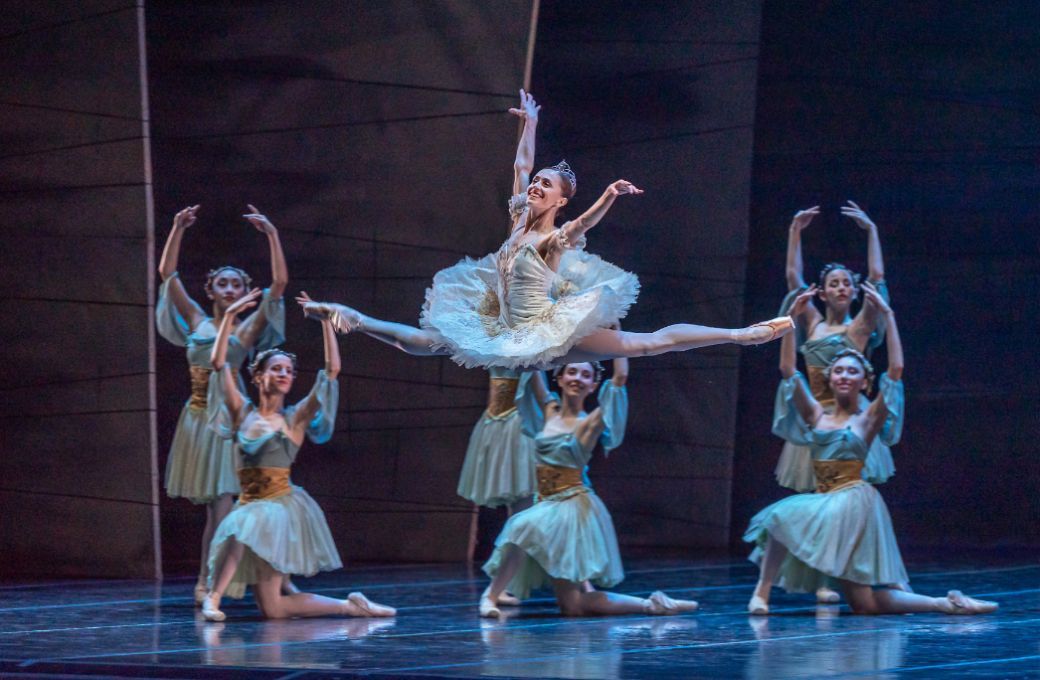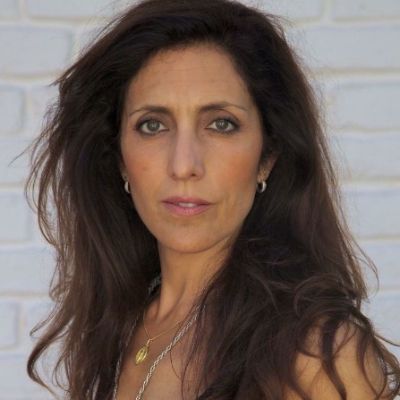Since February, Ballet Teatro Colón (BTC) has welcomed a new artistic director, Julio Bocca, a much-loved artist in Argentina. A former principal of American Ballet Theatre, it was his name who popularised ballet in the country in the 1990s in a way never seen before. “Becoming artistic director of BTC is a way to close the circle of my career,” Bocca tells me, when I catch him between rehearsals of Don Quixote.
Bocca, who first entered the theatre’s ballet school 50 years ago, went on to win the gold medal at the Moscow International Ballet Competition in 1985 and from there, his international career has soared. He’s had his own company, created a foundation, danced with major ballet companies around the world, and transformed Uruguay’s national ballet company, Sodre, when he became its artistic director. He left a legacy of quality and a new working culture – but also a different way of approaching audiences, challenging them with new creations and languages.
Ballet Teatro Colón of Buenos Aires, Argentina is in the midst of celebrating its centenary. It was the first ballet company to be created in the Americas, thanks to the existence of the magnificent Teatro Colón. Originally built in 1857, it was rebuilt in 1908 with an auditorium that houses 2500 people. It is widely considered to be one of the best opera houses in the world.
The Teatro Colón often invited Diaghilev’s Ballet Russes with its star Vaslav Nijinsky, as well as Anna Pavlova’s company. The inevitable next step was the creation of its own ballet ensemble, orchestra, choir and an accompanying school (1922), so the audiences could enjoy local cultural productions.
The permanent ballet company made its debut in 1925 with The Golden Cockerel, a work by its first artistic director, Diaghilev’s former dancer, Adolf Bolm. He stayed in the rich, creatively ambitious Buenos Aires together with many other dancers, to avoid uncertainty in Europe.
Since then, there have been 28 directors, including Bronislava Nijinska. Hundreds of works have formed its rich repertoire, from the classics to contemporary dance created by Alberto Alonso, Frederick Ashton, George Balanchine, John Cranko, Jiří Kylián, Goyo Montero and Kenneth MacMillan to name but a few. There are also Argentinians in the mix such as Oscar Araiz, Mauricio Wainrot, Mario Galizzi and Alejandro Cervera.
In line with many companies in Latin America, BTC is managed by the government: in this case, the government of the Autonomous City of Buenos Aires (CABA). As a result, the fluctuating political landscape impacts on budgets and artistic ensembles – who are often strongly unionised, politically militant, sceptical of changes and keen to keep their jobs.
All these challenges are accepted graciously by Bocca, whose ambitions and passion for his alma mater are big. It was important for the city’s culture minister, Gabriela Ricardes, to bring Bocca back, as much for the Argentinian audiences who love celebrating a national hero.
With Bocca on board, structural changes within the theatre were introduced led by new general director Gerardo Grieco, a Uruguayan who made huge changes when he was with Sodre. He is the first ever foreign director of the institution and is paving the way for Bocca’s ideas.
“I knew I had to do something very special for the centenary”, he says, “and imagined it was going to be difficult, but not so slow.” He sighs reminding me, “I would love to have 2027 finished already since I prefer to programme three years in advance.”

International auditions were conducted and 20 dancers were hired. Unfortunately the new recruits experienced legal battles brought about by the dancers’ union. In November there will be more auditions for 2026.
Bocca’s team is made up of a strong mix of existing teachers and new ones like former principals Nadia Muzica and Alejandro Parente. His Spanish assistant director África Guzmán who he describes as his right hand person, danced with Nacho Duato and Jiří Kylián. Argentinian Luis Ortigoza, former director of Ballet de Santiago (Chile), was trained at Teatro Colón’s school.
Almost six months into the season, the company has, according to local critics, successfully performed Marcia Haydée’s version of Carmen, in which words are spoken by dancers, something new for artists and audiences, and a mixed bill with Duato’s Por vos Muero, Goyo Montero’s Chacona and Ortigoza’s version of Paquita.
In July it was Don Quixote, in a version by former beloved dancers Raúl Candal and Silvia Bazilis who, Bocca tells me, “left the company on bad terms and I felt we needed to honour them.” He is rightly convinced that, “it is essential to have the knowledge of the previous generations passed on to nurture new ones.”
Don Quixote, a production of 60 dancers and ten character artists, had not only its own principals doing main roles, but Argentinian Royal Ballet principal Marianela Núñez, with Cuban dancer Patricio Revé (formerly Queensland Ballet) guesting. Her performances started ‘Nelamania’ among fans and press, with a sea of people at the stage door and Núñez greeting them Evita style.
Bocca is genuinely enthusiastic about his tenure. “Dancers need to experience different languages, so it is good for them to work with new creators, and the ballet school (Instituto Superior de Arte) has also been in my mind since arriving,” he says. “I am trying to create a closer relationship, so if new choreographers come, I want the students to have workshops. I have also introduced contemporary classes from earlier in their education, because dancers today need to be more versatile.”
The school, originally training in the Russian method, has produced many dancers who went on to have careers at the highest level in international companies. “Naturally, the school has to feed the company, but young dancers have been leaving,” he points out.
Bocca has a clear vision, a wealth of knowledge and a huge black book with many big names on speed dial – yet he says he “does not yet know the company very well. I am just starting to see how the dancers work in rehearsals and performances, looking for soloists and new principals, testing newly hired dancers in solo roles and they are getting to know me.”
The centenary Gala in August saw the company, orchestra and choir performing together in an excerpt of Wainrot’s acclaimed Carmina Burana. Other alumni and international guests joined including Viengsay Valdés from National Ballet of Cuba, Tiler Peck from NYCB and Colón graduates Herman Cornejo (ABT principal) and Paris Opera étoile Ludmila Pagliero. Even choreographer Christopher Wheeldon came to see his After the Rain performed, while checking out the company for one of his big productions to come in 2026.
Núñez was there too, partnered in the Rose Adagio by dancers of different generations at each of the famous promenades. People described the gala as a momentous, unique celebration. Bocca didn’t leave anything or anyone out.
Two more programmes will follow at the Colón. Cranko’s Onegin in October, “thanks to an extension of its rights by the Cranko Foundation,” said a grateful Bocca, “and Cascanueces (Nutcracker) by Silvia Bazilis will conclude the season.” He wants the company to have their own production of the Christmas classic to be available every year, as a family event.
While focusing on the work still to be done and looking for sponsorship, Bocca recounts small achievements too. He changed office spaces for staff, included transitional classes for injured dancers and developed a new way to communicate with audiences including pre-performance talks. “The theatre belongs to everyone: it shouldn’t be an intimidating place. I want people to know more about what they will see, not only see dancers, but musicians, costume and other artists involved.” Public schools are invited to attend dress rehearsals, as a social outreach, and he also created an exclusive Instagram account for the ballet.
Before Bocca returns to rehearsals, I ask him about his dreams. “I want to have a new, fresh repertoire; elevate the quality of the company to be up among the ten best in the world. I want it to be international, take it abroad on tour. I’d love to bring back many Argentinian dancers working in other places and make stars at BTC, so people come here to see them. Above all, I want ballet to be popular again in Argentina, and the Colón to be less insular and exclusive.”
Next year there will be six productions – to equal the opera – including MacMillan’s Manon, Harald Lander’s Études, and a new Argentinian ballet based on a story by Jorge Luis Borges.
See more about Ballet Teatro Colón.


